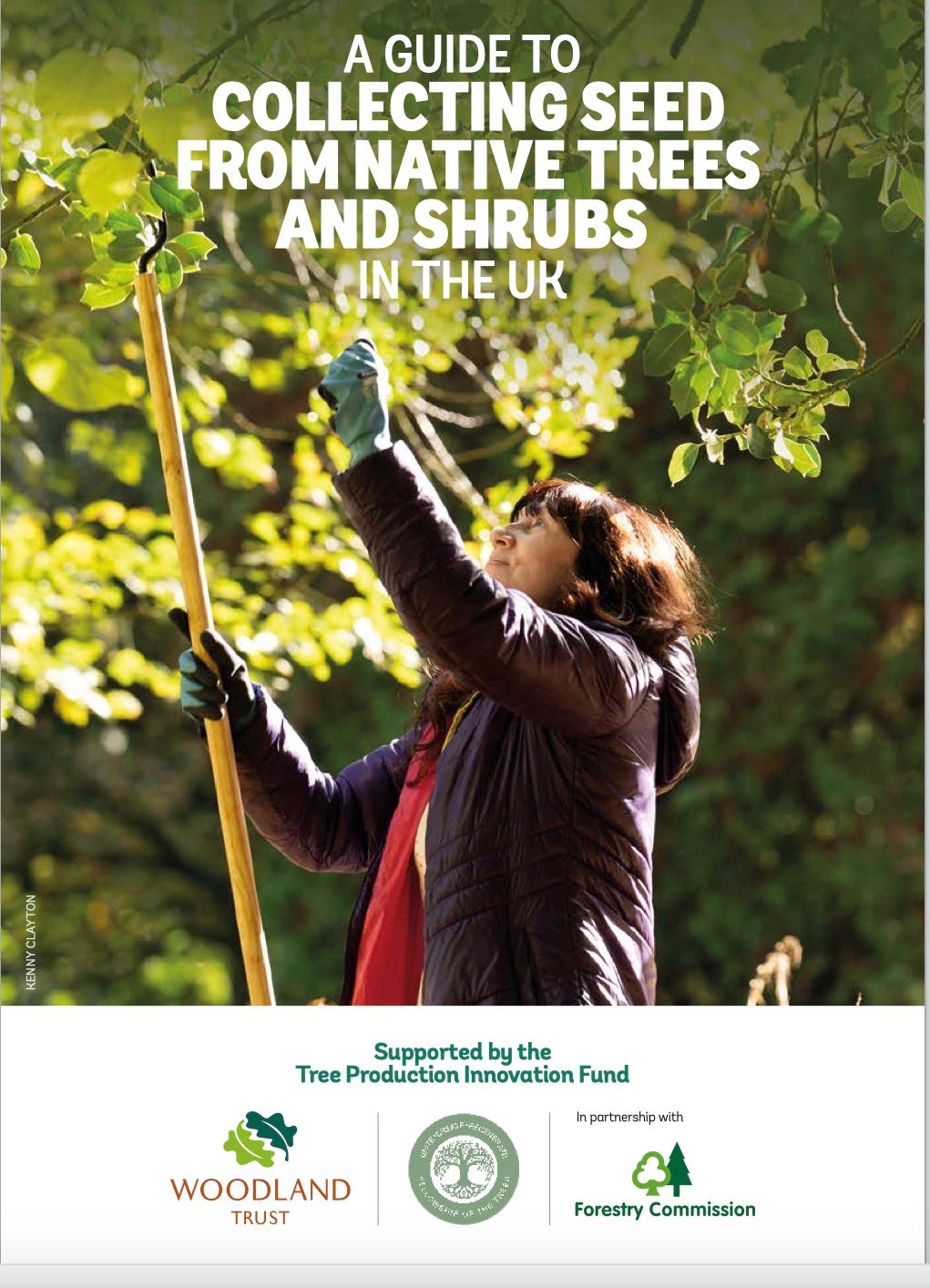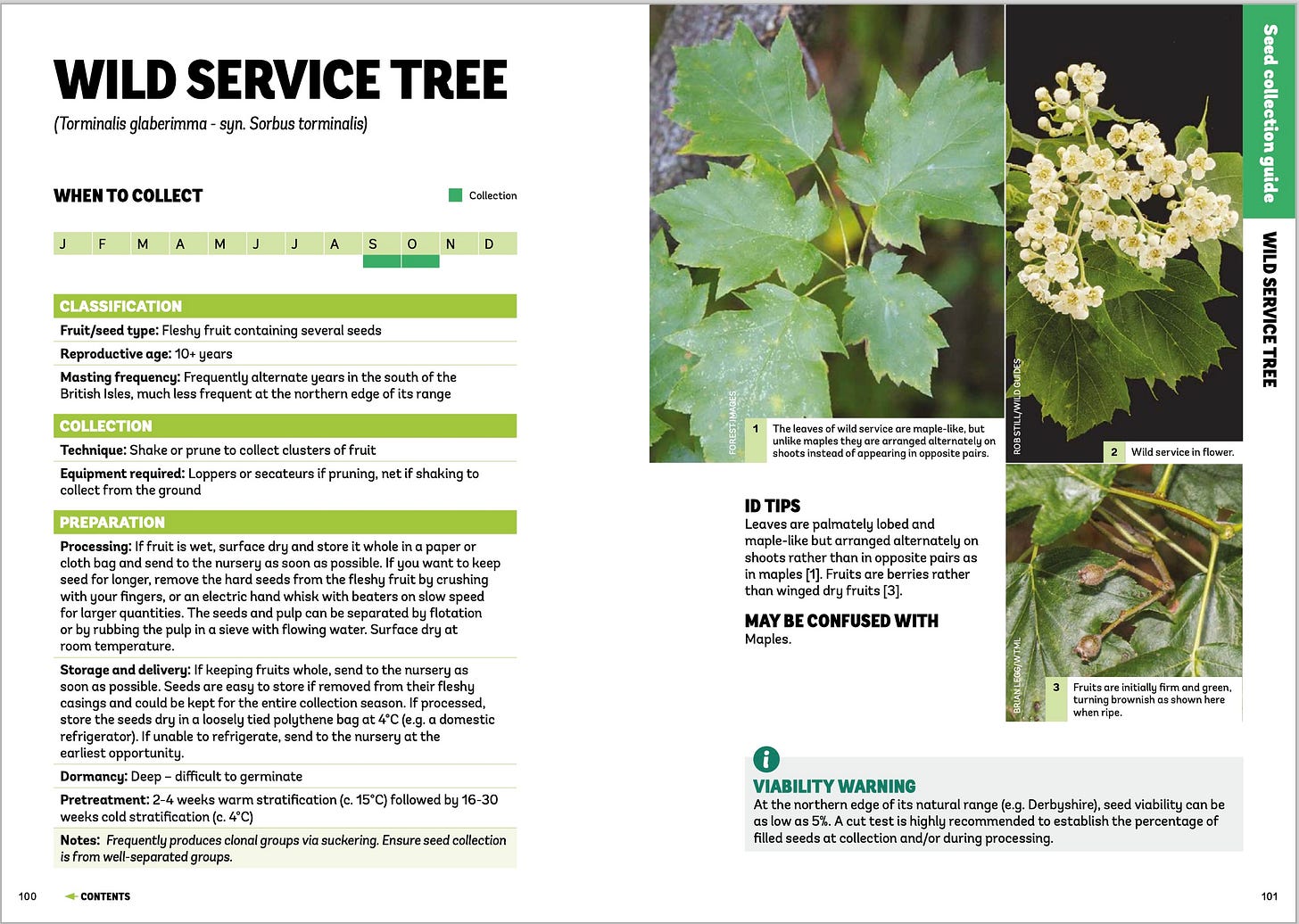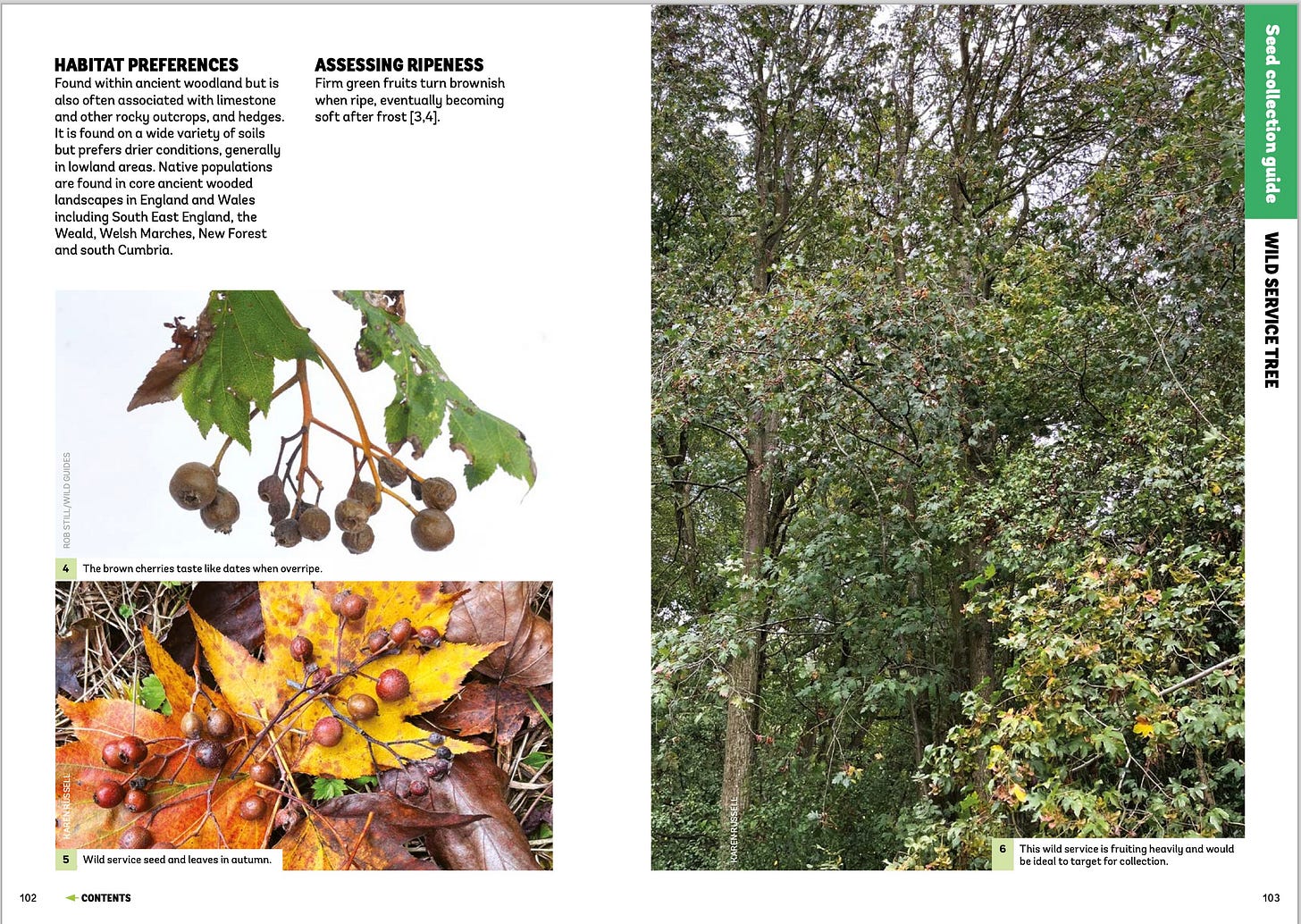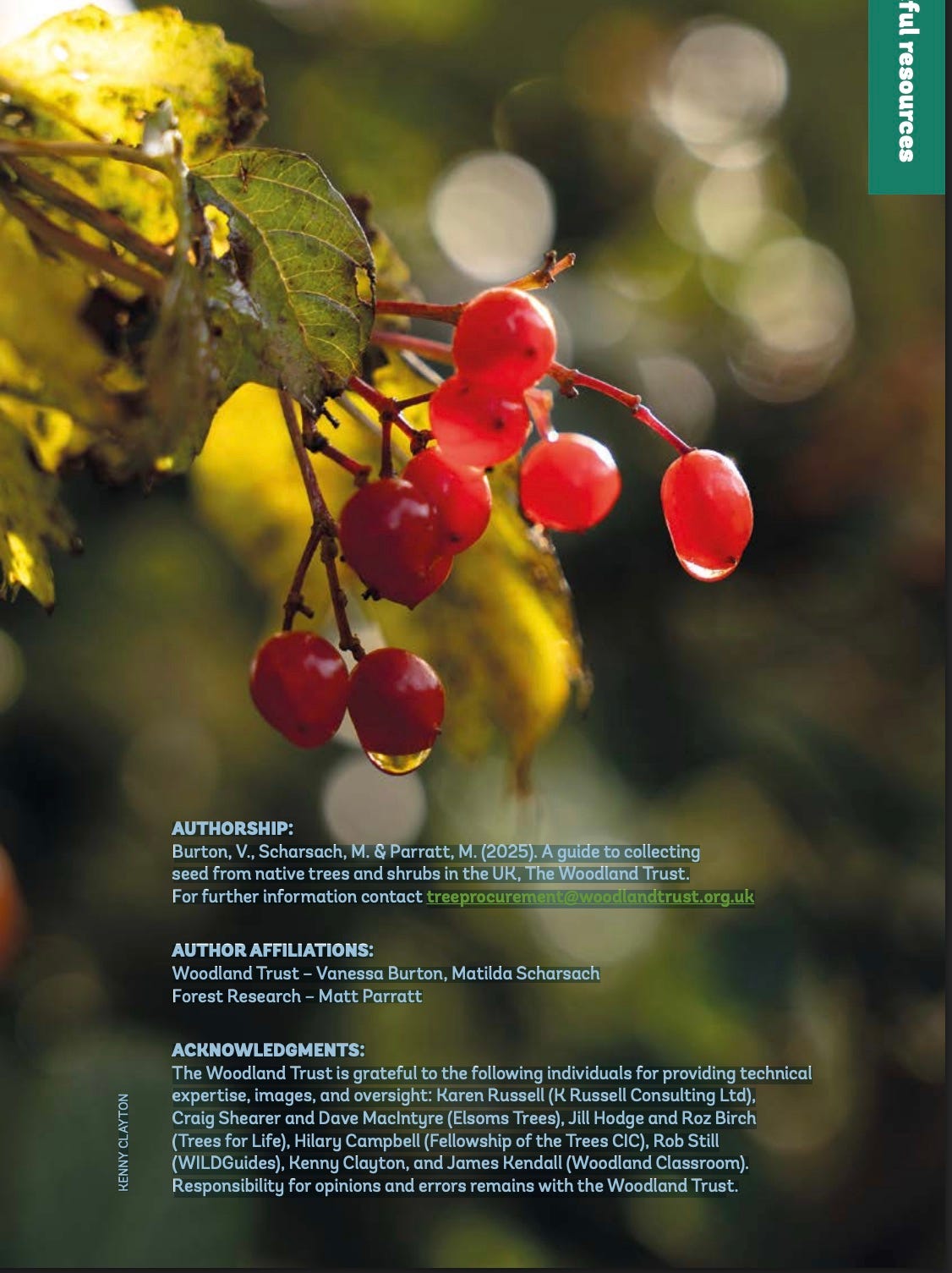A guide to seed collection for native trees and shrubs in the UK
We are delighted to share the new tree seed collection handbook which has been produced by the Growing Diversity project in partnership with the Scottish Seed Collection Project.
As we approach the final date of the project, 31st March, we are now excited to share the project’s final resource for Community Tree Nurseries (CTNs), which is ‘A guide to collecting seed from native trees and shrubs in the UK’.
Whether you are new to seed collection or whether this is something you have been involved in for some years, we believe this guide will be a valuable resource in your seed collection activities. The guide has been produced by both the Growing Diversity project and the Scottish Seed Collection project.
The Growing Diversity project has supported CTNs to strengthen their objectives for growing healthy, biosecure trees from seeds. If you are new to the Substack, you can find out more about the project, which has run from October 2023 to March 31st 2025 here.
This guide is designed to provide species specific guidance to identify healthy and viable seed in the field, with high quality images supporting the text for each species. In this way the aim is to support the collection of viable seeds for processing and growing.
You can download your copy below:
The following extract is from the Introduction to the guide:
THE IMPORTANCE OF SEED COLLECTION
In a European context, woodland cover in the UK is low (13% compared to a
European average of 37%) and in poor ecological condition (only 7% is in good
condition). Native woodland makes up only 49.5% of the total, and ancient
woodland just 2.5%. In these difficult times for our environment, with climate
change and biodiversity loss, taking action to increase woodland cover
is essential.
Many organisations, the government, landowners and tree nurseries
are working hard to increase native woodland cover, but there is often a
shortage of seed of the right species and from the locations that we need.
This means that trees required for native woodland planting aren’t available
on a big enough scale to meet ambitious planting targets and often aren’t
available for creation projects.
To help address this supply shortage, organisations and businesses alike
rely on a substantial number of volunteers together with tree nursery staff
to collect tree seed across the UK to increase supply. This guide aims to
support people with various levels of knowledge and experience to collect
seed successfully, safely and sustainably.1
Tree seed collection is a enjoyable way to engage with Nature and Community, bringing people of all ages together. It is also a good way to help support a local Community Tree Nursery to grow healthy trees from local provenance seeds and to learn more about trees. The key period of the year for collecting Native seeds is between September and November.
It is important to plan seed collection activities in advance to ensure you will be effective in gathering healthy and viable seed on the day(s) of collection. Also in order to ensure that the volunteers who support the activity(ies) are fully informed and supported through the process.
During the course of this project we supported three CTNs to facilitate tree seed collection events with a particular focus on collecting seeds from species which have less seed being collected and also those that are harder to grow. This is because the key focus of the project has been to enable an increase in the production of such species. (See previous posts in this Substack to find out more).
The key feedback we received from all three seed collection events was that the events were enjoyable, informative, productive and satisfying. Participants felt a stronger sense of connection to the trees and to doing something positive to help local tree projects.
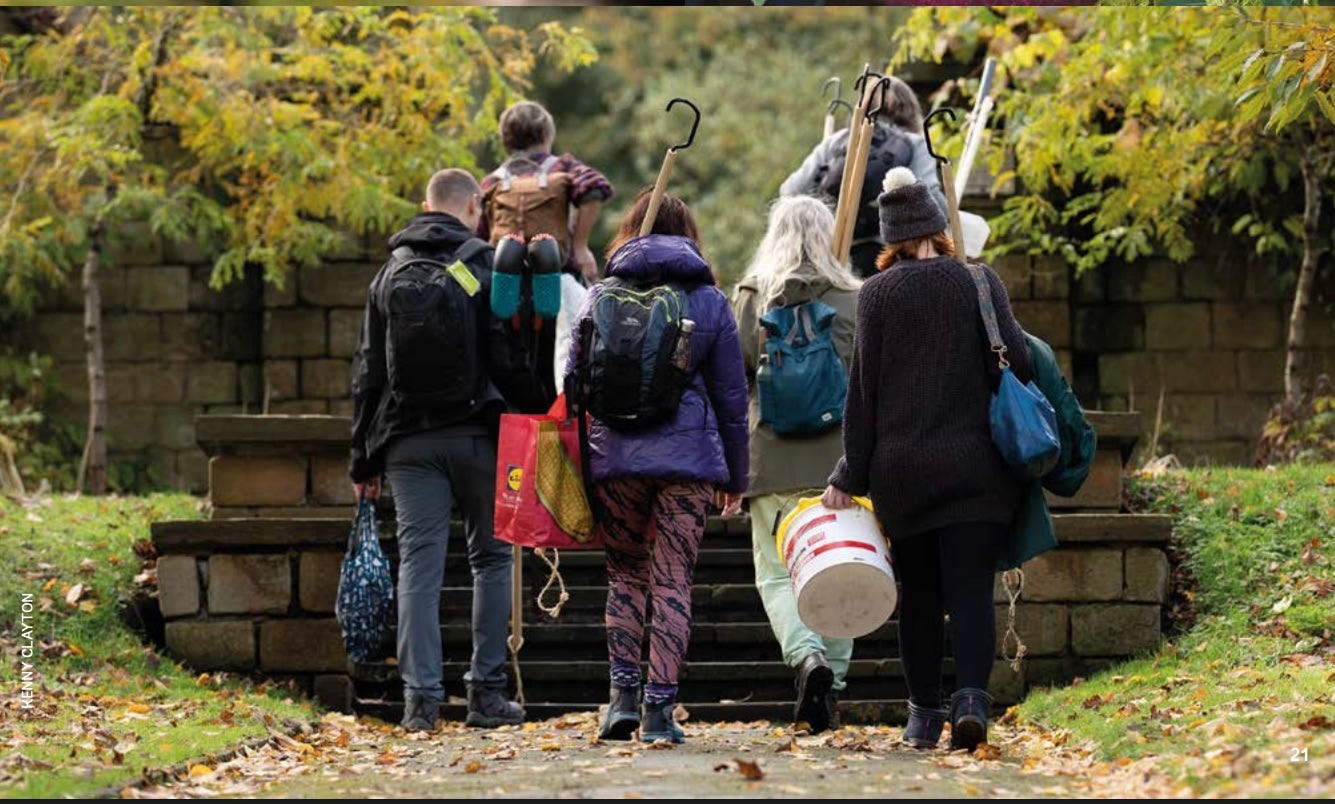
The guide covers aspects of the practical considerations involved in planning seed collection events, such as: Timing, for example: ‘to collect mature seed at the point of natural dispersal, i.e. when the tree would naturally be shedding its seeds’. Also: Assessing sites, for example ‘if you’re not sure which trees you will be collecting from at a site, have a look at OS maps, or aerial imagery such as Google maps or Bing maps, before visiting. This can help to assess where there are large canopied trees, clearings, edges or particular habitat types to find specific species, for example boggy areas to find alders and willows. Permission, for example: ‘Ensure you have consent from the landowner to arrange access and collect seed’. Health and Safety, ‘it’s recommended to carry out a risk assessment before each site visit”. Biosecurity, such as ‘when moving between sites for collections, there is a risk of spreading pests, diseases and other harmful, invasive non-native species. All these can have negative impacts on habitats and are costly to eradicate. It’s essential to follow guidelines for personal biosecurity. Assess the risk before arriving, arrive clean, leave clean, and have all the equipment you need to do this: container or bucket to immerse boots, adequate water supply, long handled plastic bristled brush, boot pick, cleansing wipes/ soap’. (Pages 14 and 16 of the guide).
The guide explains the way that trees are mapped in terms of regions of provenance (RoP), the sub divisions of seed collection zones and the priority tree species that have been of particular interest to the projects. There is useful advice as to how to assess seed maturity and ripeness and a ‘ripeness overview’ chart that denotes the months where you would expect to find ripe seeds on the different species included.
In the species section, there are clear and beautiful photographs for each tree species and their seeds, together with all the relevant seed collection guidance associated with the particular species. Below is an example of the Wild Service Tree -
We wish to thank and acknowledge all those who were involved in the authorship and creation of this guide -
You can also access the guide and all other resources linked to the Growing Diversity project’s webpage here.
Many thanks to you all also for supporting the project and we wish you well with all your seed collection activities and growing healthy trees!
The Growing Diversity project has been a partnership initiative between Fellowship of the Trees CIC and The Woodland Trust. Supported by the Forestry Commission’s Tree Production Innovation Fund.
Hilary Campbell
Growing Diversity Project Coordinator.



